Politics
In northern Gaza, ‘people have nothing left to eat’
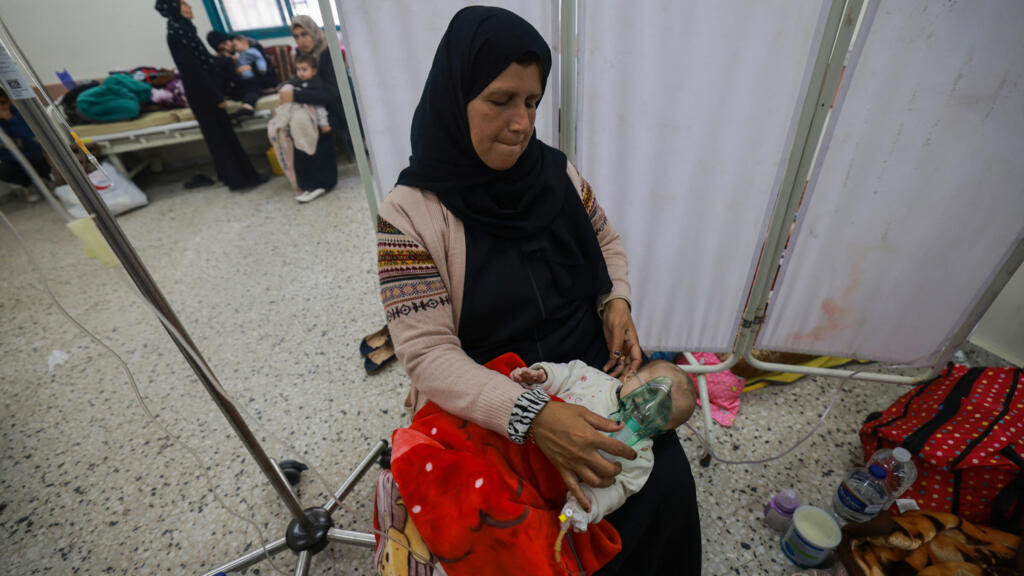
At least 20 people have died from malnutrition and dehydration in Gaza, the enclave’s Hamas-run health ministry said on Wednesday. It reported that most of those dead are children. With limited access to food and healthcare, aid officials have warned for months that Palestinians in the enclave are at risk of famine.
Famine is becoming a real threat for Gazans, exhausted by five months of war. At least 20 people have died from malnutrition and dehydration, the Hamas-run health ministry in Gaza reported Wednesday.
Representatives of the World Health Organization (WHO) in recent days have visited hospitals in the north of the enclave for the first time since the conflict broke out in October 2023. The workers found “severe levels of malnutrition, children dying of starvation, serious shortages of fuel, food and medical supplies, hospital buildings destroyed”, WHO chief Tedros Adhanom Ghebreyesus said on Monday.
Grim findings during @WHO visits to Al-Awda and Kamal Adwan hospitals in northern #Gaza: severe levels of malnutrition, children dying of starvation, serious shortages of fuel, food and medical supplies, hospital buildings destroyed.
The visits over the weekend were the first… pic.twitter.com/CxaCuau7iR
— Tedros Adhanom Ghebreyesus (@DrTedros) March 4, 2024
Famine is defined by the UN as “a situation in which a substantial proportion of the population of a country or region are unable to access adequate food, resulting in widespread acute malnutrition and loss of life by starvation and disease”.
It has warned that a famine is “almost inevitable” for the 2.2 million inhabitants of Gaza.
90 percent of children between six and 23 months old as well as pregnant and breastfeeding women are facing severe food poverty across the territory, according to a report released in February by the Global Nutrition Cluster, a network of NGOs led by UNICEF.
Aid organisations on the ground blame Israel for preventing enough food trucks from entering the enclave.
Read moreMalnourished, sick and scared: Pregnant women in Gaza face ‘unthinkable challenges’
President Joe Biden on Thursday ordered the US military to open a temporary aid port off the coast of Gaza.
On Friday, European Commission President Ursula von der Leyen said a maritime aid corridor between Cyprus and Gaza could open as soon as this weekend.
FRANCE 24 spoke to Jean-Raphaël Poitou, regional director for Action Against Hunger in the Middle East, who says Palestinians in northern Gaza have “nothing left to eat”.
He says if aid continues to be as limited as it is now, the death toll linked to food poverty in the enclave “could rise sharply” in the coming weeks.
Are we talking about an ongoing famine in Gaza or a risk of famine?
Jean-Raphaël Poitou: We are starting to see people, particularly children, die of malnutrition. So yes, we are talking about famine or at the very least, an advanced risk of famine.
To determine whether a famine is ongoing, the UN relies on criteria given by the Integrated Food Security Phase Classification (IPC). The IPC is a standardised system developed by the FAO and other international organisations used to classify and communicate the level of famine or food security in a given context.
A report published back in December had already warned of extremely advanced risks in several areas of Gaza. On a scale of five levels of food insecurity, we reached level three [crisis level]. Given that aid is still lacking, it is normal that three months later, the ranking has moved up to levels four or five [emergency and famine, respectively] – the highest ranking.
Children are particularly vulnerable because their immune systems are not yet fully developed, so their bodies cannot defend themselves the way adult bodies can. We also need to take into account all the elements that accelerate severe malnutrition, like the lack of drinking water, degraded sanitary conditions, respiratory problems and an entirely destroyed access to healthcare. Malnutrition has long-term effects for children, especially on their brains. That is why children under five are prioritised – their brains are not yet fully developed.
Northern Gaza is one of the areas worst hit by malnutrition. What do they have left to eat?
They have nothing left to eat. When we speak to colleagues on the ground, they say Gazans will eat anything, even grass or leaves. Dozens of UN missions have tried entering the north of the enclave, but according to the latest figures, the Israeli army has only accepted 20 percent of the 77 requests made.
Food is unaffordable in Rafah, southern Gaza. Not enough aid is making it through and little has improved in that regard. The attacks on aid convoys show that people are in total desperation to find the food they need to survive.
Read more‘Flour massacre’: Lifesaving aid becomes a deadly struggle in Gaza
It complicates our work in the field. We cannot put our teams at risk, so we have to work on a much smaller scale with communities we know well. Our aid distributions generally include chickpeas, oil or flour, since bread is a staple food. We also used to distribute vegetables when crops were still available in the fields.
When thinking of famines, people often conjure up the terrible images of emaciated children in Somalia during the early 1990s. Is that something we could see happening in Gaza?
It is true that it is not common to see those kinds of images in a Middle Eastern context, but that is what is happening in Gaza right now. And we’re likely to see more and more of them.
We cannot deliver aid on a large scale and we cannot organise distributions without a ceasefire. But we do have solutions and protocols for treating extreme cases of malnutrition like peanut-based foods, which are very rich in calories. They allow children to recover and halt the process of malnutrition.
Still, we need access to these populations. If we do nothing in the meantime, people will starve to death and the number of victims will start to spike.
Last weekend, the US airdropped food and other humanitarian aid into Gaza. Is this a tenable solution to compensate the lack of trucks entering the enclave?
In our point of view, this is not the method to use. We know from experience small groups can hijack parachutes and that the method encourages criminality. What’s more, those most vulnerable won’t be able to access that aid, only the strongest will be able to collect it. That is why we do not encourage this practice at all. We really need to work on a diplomatic level to open up different aid access routes and ensure it is properly distributed.
- At least 20 percent of households face extreme lack of food
- At least 30 percent of children suffer from acute malnutrition
- Two people for every 10,000 die each day due to outright starvation or to the interaction of malnutrition and disease
This article is a translation of the original version in French.
Politics
‘Noon against Putin’: A small gesture and a powerful symbol of Russia’s opposition
The widow of Russia’s late opposition leader Alexei Navalny is calling on voters in the country’s presidential election to turn up at polling stations en masse at 12 noon on March 17 and either vote against Vladimir Putin or spoil their ballot. The protest action, known as “Noon Against Putin”, aims to honour Navalny’s last wishes, while illustrating the high number of voters who are against Russia’s war on Ukraine.
President Vladimir Putin is hoping for record turnout in the country’s forthcoming March 15-17 elections. And now the Russian strongman, who is seeking a fifth term in office in a tightly controlled vote, might find his wish has been granted.
But if voters turn out in high numbers on March 17 at noon sharp, Putin might feel he should have been careful what he wished for.
The “Noon against Putin” protest action was called for by the late Alexei Navalny two weeks before his death in an Arctic prison, and is now being continued by his widow Yulia.
Promoters of the protest want Russians to wait until noon on March 17 to go to their polling station. They don’t care which candidate they vote for – as long as it’s not Putin and as long as they come precisely at noon.
“The choice is yours. You can vote for any candidate except Putin,” Navalnaya said in a YouTube video.
“You can ruin the ballot, you can write ‘Navalny’ in big letters on it. And even if you don’t see the point in voting at all, you can just come and stand at the polling station, and then turn around and go home.”
Russia’s presidential election is widely expected to hand Putin another six-year term, keeping him in the Kremlin until at least 2030. The vote is being held with no meaningful opposition challengers and international observers have already raised concerns about its transparency and accountability.
Navalnaya views the polling protest as a gesture of support for the Russian opposition and a powerful way for citizens to show they are against Russia’s war on Ukraine.
Indeed the protest action may be the only thing motivating Russians who are against Putin to turn out and vote.
“How many people will show up is the only interesting figure in these elections,” says Matthew Wyman, a specialist in Russian politics at Keele University in the UK.
‘Navalny’s political legacy’
“We have to sabotage it [the election],” says Maxim Reznik, an exiled Russian opposition figure who came up with the idea for the initiative, when interviewed by independent Russian news website Meduza.
Reznik first suggested the protest action during a debate – “What to do about the presidential election?” – broadcast in January 2024 on the opposition channel Dozhd.
Since then, most of Russia’s leading opposition figures have voiced their support for the “Noon Against Putin” initiative, starting with Navalny’s anti-corruption foundation, which rarely misses an opportunity to promote it.
Novaya Gazeta, the independent Russian newspaper, has even called the protest action “Navalny’s will”.
“It’s very appropriate to link it to Navalny because it’s the kind of thing he would have done,” Wyman points out.
“It is in the spirit of a lot of things Navalny was doing and asking people to do: it’s not difficult, and with small steps you can hope to make big changes,” adds Jenny Mathers, a specialist in Russia at Aberystwyth University in Wales.
“Noon against Putin” ties in perfectly with this strategy. Going to the polling station at a specific time calls for no particular effort from voters – neither does it put them at risk.
“What they are doing is trying to find ways to show resistance without risk of being put in jail. The protest is brilliant because they are doing exactly what the regime wants you to do: going to vote,” says Wyman, adding that the police would find it hard to justify arresting voters for doing their civic duty.
Mathers suggests it is important to start with small steps.
“The idea is to rebuild civil society and a credible opposition force that has been badly hit lately,” she notes. “After small steps, maybe a bigger one will come? I see it as one piece of a long-lasting campaign,” Mathers adds.
The number of Russians opposed to the war
This type of protest action illustrates “the creativity of actions undertaken by the opposition in Russia”, explains Wyman, adding that “the space to protest has been kind of reduced and reduced”.
“Noon against Putin” is just one of a long list of initiatives in a similar vein. Demonstrators have held up blank sheets of paper to symbolise the censorship of any criticism of Russia’s war on Ukraine, and activists have added QR codes to advertising billboards so that citizens can access websites critical of Putin.
“These are the kind of practices you see in regimes that become more and more oppressive,” says Mathers.
“It is like what China does, when they use Winnie the Pooh,” adds Mathers, referring to China’s ban of a Winnie the Pooh film after the Chinese used memes to mock their leader Xi Pingping by comparing him to the honey-loving bear.
Some wonder if the protest action will have any real impact.
“Obviously it’s not going to change the outcome of the election,” admits Mathers.
However, Wyman believes it will give a “better picture” of the strength of the opposition to the war on Ukraine.
The vast crowds that gathered for Navalny’s funeral on March 1 have already given some insight into the feeling of dissent in Russia. At least 27,000 people came to say farewell to Navalny at Borisovsky cemetery on the outskirts of Moscow, according to a count by the independent Russian news outlet Mediazona.
But Stephen Hall, a Russia specialist at the University of Bath, predicts that voter turnout will be much higher than it was for Navalny’s funeral – pointing out that it was mainly Muscovites who attended, and that police had warned people to stay away.
“Here the risk of arrest is low and it’s [taking place] all over Russia.
“This is a low risk way to show you’re against the regime and the war.”
Stealing the media limelight from Putin
Hall believes one of “Noon Against Putin’s” main challenges will be mobilising people outside of Moscow or St Petersburg.
“Putin has always counted on popular support on the outskirts of major urban centres. If long queues form in front of polling stations all over Russia at midday on Sunday, he may start to worry about the real level of his popularity,” he explains.
“Noon against Putin” also aims to steal the media spotlight from the Kremlin.
“The regime wants this election to be non-controversial. So the more disruption there is, like huge numbers going to polling stations at noon, the more this might be a problem for Putin,” says Mathers.
“Putin desperately wants all the world headlines after the election to say he ‘got 85 percent’,” says Reznik.
“But now, rest assured, you’ll see! All the headlines won’t be about Putin’s performance but about what happened at ‘Noon’,” Reznik adds.
“It’s about creating a counter-narrative,” agrees Matthew Wyman.
This is partly so that Russians opposed to the regime do not feel alone, but it’s also “a way to say to the world we are not all Putin, and that there is a movement to support in Russia”, adds Mathers.
But for that to happen, voters will need to turn out in high numbers at polling stations at noon on Sunday.
This article has been translated from the original in French.
Politics
US House of Representatives overwhelmingly passes TikTok ban bill
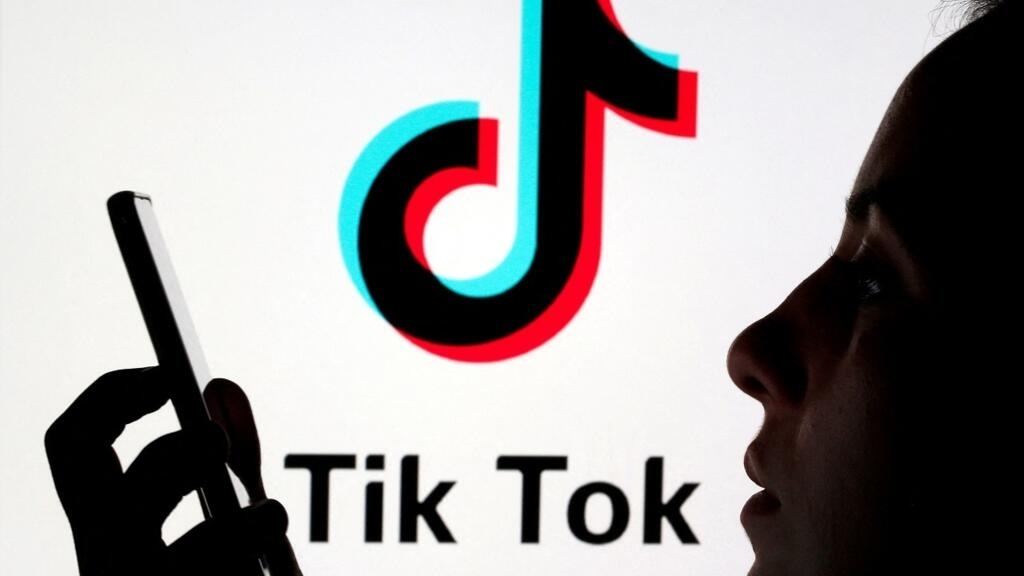
The US House of Representatives overwhelmingly approved a bill on Wednesday that would force TikTok to divest from its Chinese owner or be banned from the United States.
Issued on:
2 min
The legislation is a major setback for the video-sharing app, which has surged in popularity across the world while causing nervousness about its Chinese ownership and its potential subservience to the Communist Party in Beijing.
The lawmakers voted 352 in favor of the proposed law and 65 against, in a rare moment of unity in politically divided Washington.
“Today’s bipartisan vote demonstrates Congress’ opposition to Communist China’s attempts to spy on and manipulate Americans, and signals our resolve to deter our enemies,” Republican House Speaker Mike Johnson said after the vote.
“I urge the Senate to pass this bill and send it to the President so he can sign it into law,” he added.
But the fate of the bill is uncertain in the more cautious Senate, where some key figures are apprehensive of making such a drastic move against an app that has 170 million US users.
President Joe Biden will sign the bill, known officially as the Protecting Americans from Foreign Adversary Controlled Applications Act, into law if it came to his desk, the White House has said.
“This process was secret and the bill was jammed through for one reason: it’s a ban,” said a spokesperson for TikTok in a statement.
“We are hopeful that the Senate will consider the facts, listen to their constituents, and realize the impact on the economy, 7 million small businesses, and the 170 million Americans who use our service,” the spokesperson added.
The measure, which only gained momentum in the past few days, requires TikTok’s parent company ByteDance to sell the app within 180 days or see it barred from the Apple and Google app stores in the United States.
It also gives the president power to designate other applications to be a national security threat if they are under the control of a country considered adversarial to the US.
The renewed campaign against TikTok came out of the blue to the company, the Wall Street Journal reported, with TikTok executives reassured when Biden joined the app last month as part of his campaign for a second term.
TikTok CEO Shou Zi Chew is in Washington, trying to stop progress on the bill.
The Trump factor
China warned on Wednesday that the move will “inevitably come back to bite the United States.”
“Although the United States has never found evidence that TikTok threatens US national security, it has not stopped suppressing TikTok,” foreign ministry spokesperson Wang Wenbin said, condemning it as “bullying behavior.”
Republican lawmakers approved the bill, in an unusual act of defiance against Donald Trump.
In a turnaround from his earlier stance, Trump on Monday said he was against a ban, mainly because it would strengthen Meta, the owner of Instagram and Facebook, which he called an “enemy of the people.”
When Trump was president, he attempted to wrest control of Tiktok from ByteDance, but was blocked by US courts.
“I think it will die in the Senate,” said representative Nancy Mace, a Trump ally. “This is not our job to do this.”
Other efforts to ban TikTok have failed, with a bill proposed a year ago getting nowhere largely over free speech concerns.
Similarly, a state law passed in Montana banning the platform was suspended by a federal court on the suspicion that it violated constitutional free speech rights.
TikTok staunchly denies any ties to the Chinese government and has restructured the company so the data of US users stays in the country with independent oversight, the company says.
(AFP)
Politics
Charles de Gaulle’s eldest son, Philippe de Gaulle, dies aged 102
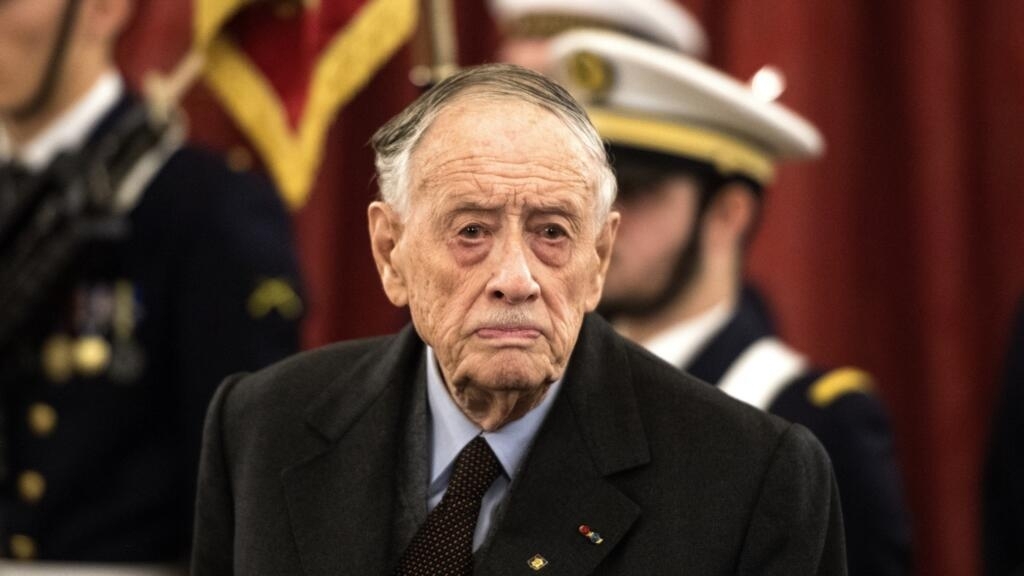
The eldest child of French World War II Resistance leader and first postwar president Charles de Gaulle, has died aged 102, the family said on Wednesday.
Issued on:
2 min
Philippe de Gaulle, who was a significant military figure in his own right, heeded his father’s call to join Free French forces in the fight against Nazism in World War II.
He later had a successful naval career, rising to the rank of admiral, and also became a senator.
Despite a striking physical resemblance, he was a more low-key figure than his father but devoted himself to preserving the memory of Charles de Gaulle, notably through numerous books including the successful work “De Gaulle, my father”.
His son Yves de Gaulle told AFP that he died overnight from Tuesday to Wednesday in the Invalides in central Paris, the French military institution where he had lived for two years.
Les armées s’inclinent devant la disparition de l’amiral Philippe de Gaulle. De la fougue du combattant de la France Libre à la finesse de l’officier général, son parcours continuera de guider les générations sous les armes. Saluons l’engagement d’une vie au service de la 🇫🇷. pic.twitter.com/xHxmNtLMSS
— Chef d’état-major des armées (@CEMA_FR) March 13, 2024
“Philippe de Gaulle anticipated his father’s call to join the Resistance,” President Emmanuel Macron wrote in a tribute on X.
“Sailor, admiral, senator, he never came up short when courage and honour were required. A century of French bravery.”
Macron opened a cabinet meeting Wednesday with a tribute to Philippe de Gaulle and would hold a national memorial ceremony at the Invalides next week in his memory, government spokeswoman Prisca Thevenot said.
Eric Ciotti, head of the right-wing Republicans party that sees itself as the inheritor of de Gaulle’s political mantle, described Philippe de Gaulle as a “pillar” of France.
“His life dedicated to the service of France, in the navy and in the Senate, was a living example for the Republic,” he wrote on X.
“France was in his heart until the end,” added Defence Minister Sebastien Lecornu.
‘Not easy’
He joined the Free French Naval Forces in 1940 and fought in the North Atlantic until 1944, then in France itself when the Resistance joined the Allies in pushing the Nazis out of France, taking part in the Normandy Landings of D-Day.
After the war, he saw action during post-colonial conflicts in Indochina (modern day Cambodia, Laos and parts of Vietnam and China), Morocco and Algeria.
Charles de Gaulle was wary of the slightest hint of nepotism and never helped his son win a post, nor did he decorate him with the Order of Liberation after the war.
The upbringing of Charles de Gaulle’s three children was austere, with their mother Yvonne said to only kiss Philippe and his two sisters on their birthday and December 31.
The eldest of the sisters, Elisabeth died in 2013 while the youngest of the children Anne, who suffered from Down Syndrome, died in 1948 aged just 20.
“I know everything, my boy. Your position has never been easy. It’s not nothing to be the son of General de Gaulle,” he was told on one occasion by his father.
“But your attitude has always been the one I expected of you,” said Charles de Gaulle.
Nicolas Lacroix, the president of the Charles de Gaulle memorial in the eastern town of Colombey-les-deux-Eglises where de Gaulle lived before World War II and died in 1970, said Philippe de Gaulle would be buried opposite his father in the local cemetery and alongside his wife Henriette, his mother Yvonne and sister Anne.
“Our country has lost one of its great defenders. Gaullism has lost one of its greatest ambassadors,” he said, adding the French flag would be at half mast at the memorial until the burial takes place.
(AFP)
-

 Politics4 months ago
Politics4 months agoUS House of Representatives overwhelmingly passes TikTok ban bill
-

 Business7 months ago
Business7 months agoThe first minds to be controlled by generative AI will live inside video games
-

 Business7 months ago
Business7 months agoIndia is a ‘perfect’ emerging market for investors, ETF expert suggests
-

 Business7 months ago
Business7 months agoNike sinks 10% after it slashes sales outlook, unveils $2 billion in cost cuts
-
Business7 months ago
3 recent success tips from Mark Cuban, including what to keep in mind if you want to be a millionaire
-
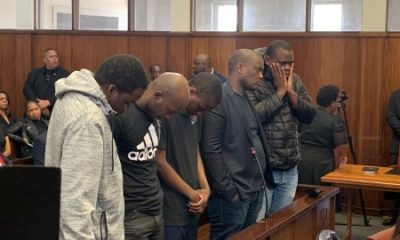
 Business4 months ago
Business4 months agoJustice for AKA and Tibz | Unpacking the Ndimande brothers’ extradition
-
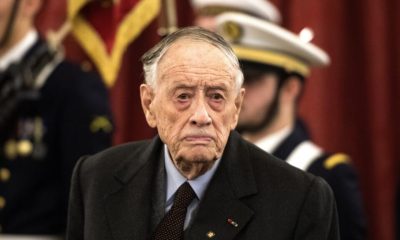
 Politics4 months ago
Politics4 months agoCharles de Gaulle’s eldest son, Philippe de Gaulle, dies aged 102
-
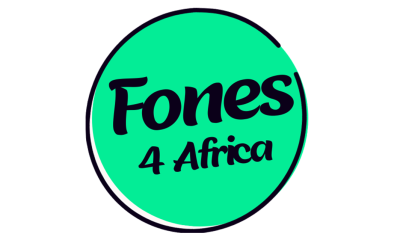
 Business4 months ago
Business4 months agoFones 4 Africa: Where Quality Meets Affordability


